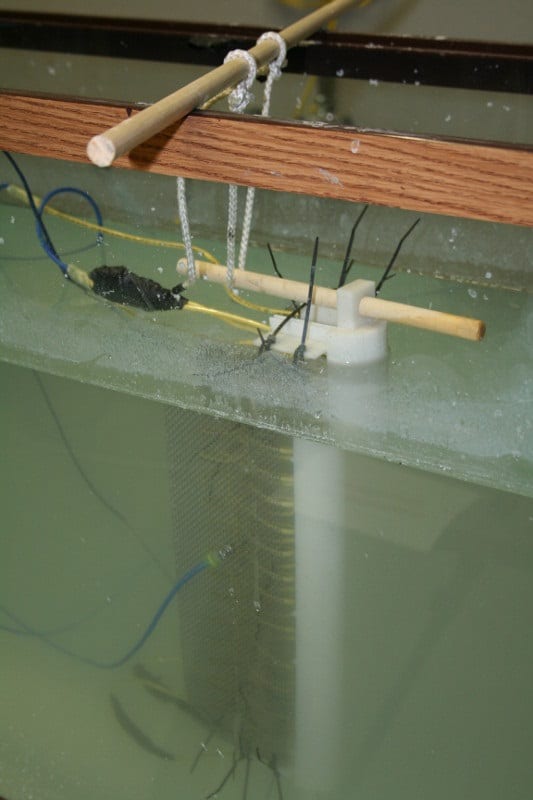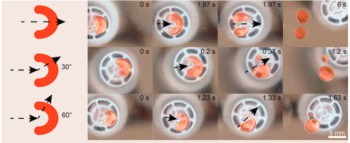Fuel-efficient ships that produce no wakes could soon be a reality thanks to computer simulations of “water cloaks” done by two researchers in the US. Yaroslav Urzhumov and Dean Culver of Duke University have shown that ions present in ocean water can be accelerated by electromagnetic waves in such a way that any turbulence created by sea-going vessels is cancelled out. Their work offers new opportunities for creating ships with greater propulsion efficiency – and could also be used to make vessels that are harder to detect.

“This cloaking idea opens a new dimension to create forces around an underwater vessel or object, which is absolutely required to achieve full wake cancellation,” says Urzhumov.
Guiding waves
Initial ideas for a water cloak were based on developing a specially designed metamaterial to coat the hulls of ships. Metamaterials are more common in optics and acoustics and comprise structures that can bend light or sound waves in ways not possible with conventional materials. In 2011, Urzhumov and colleagues hoped to develop a porous material interspersed with a complex network of miniscule pumps, to act as a metamaterial for guiding water waves. It was hoped that the system could cancel-out any turbulence caused by a moving vessel.
Urzhmov realized there were problems with this approach, arising from shear forces in water. When water is disturbed by an object, intermolecular forces tend to cause more water to be dragged along and these shear forces could not realistically be eliminated by their metamaterial. The team also was not clear on how it would create the pumps. They proposed several designs, but could not think of a way to implement them throughout a porous structure.
Pushing ions out of the way
Now, Urzhumov and Culver have devised a new method of guiding water waves, this time exploiting magnetohydrodynamic forces. This involves the motion of charged particles in a conducting fluid when subjected to electromagnetic fields. The field induces an electric current in the fluid, polarizing the charged particles. In turn, the polarized particles change the magnetic field, which generates a force on the fluid as a whole.
Seawater contains an abundance of ions including sodium, potassium and magnesium, and can therefore be subjected to magnetohydrodynamic forces. In Urzhumov and Culver’s new approach, electromagnetic fields would be used to accelerate water in the direction it would travel under normal turbulence conditions – essentially “pushing it out of the way” of a moving ship. As the vessel passes through the accelerated fluid, any movements due to turbulent and shear forces are cancelled out. The water around the ship appears to remain completely still relative to the surrounding environment, thus eliminating the wake and acting as a functioning water cloak.
Testing with simulations
Urzhumov and Culver used computer simulations to show how the cloak could be implemented practically. By carefully selecting the direction and strength of electromagnetic fields, the simulations showed that turbulence could be eliminated throughout a vessel’s journey. The only variation needed in the field would be to account for how turbulent forces increase with the speed of the vessel. They say that a simple system could be designed to increase the power of the electromagnetic fields with speed.
“If you don’t have to adjust the distribution of forces, you don’t need any electronic switches or other means of dynamic control”, says Urzhumov. “You can set the structure with a specific configuration and simply crank up the current as the object speeds up.”
There is still some way to go before water cloaks become a reality, but their applications are now looking increasingly realistic. The technology would lead to a significant increase in propulsion efficiency for ocean-going vessels. Eliminated turbulence could be exploited by warships to avoid detection from the noise associated with a wake, and could also be used to reduce damage to marine ecosystems. There are also possibilities outside of the ocean. Urzhumov believes the technology could be adapted in the future for use as ion propulsion systems in spacecraft, and for achieving much-desired increases in efficiency for thermonuclear fusion reactions. “I believe these ideas are going to flourish in several of these fields,” Urzhumov concludes. “It is a very exciting time.”
The duo has built a “rough prototype” of the cloak and is testing it in a small tank of sea water (see figure). The research is described in Physical Review E.



